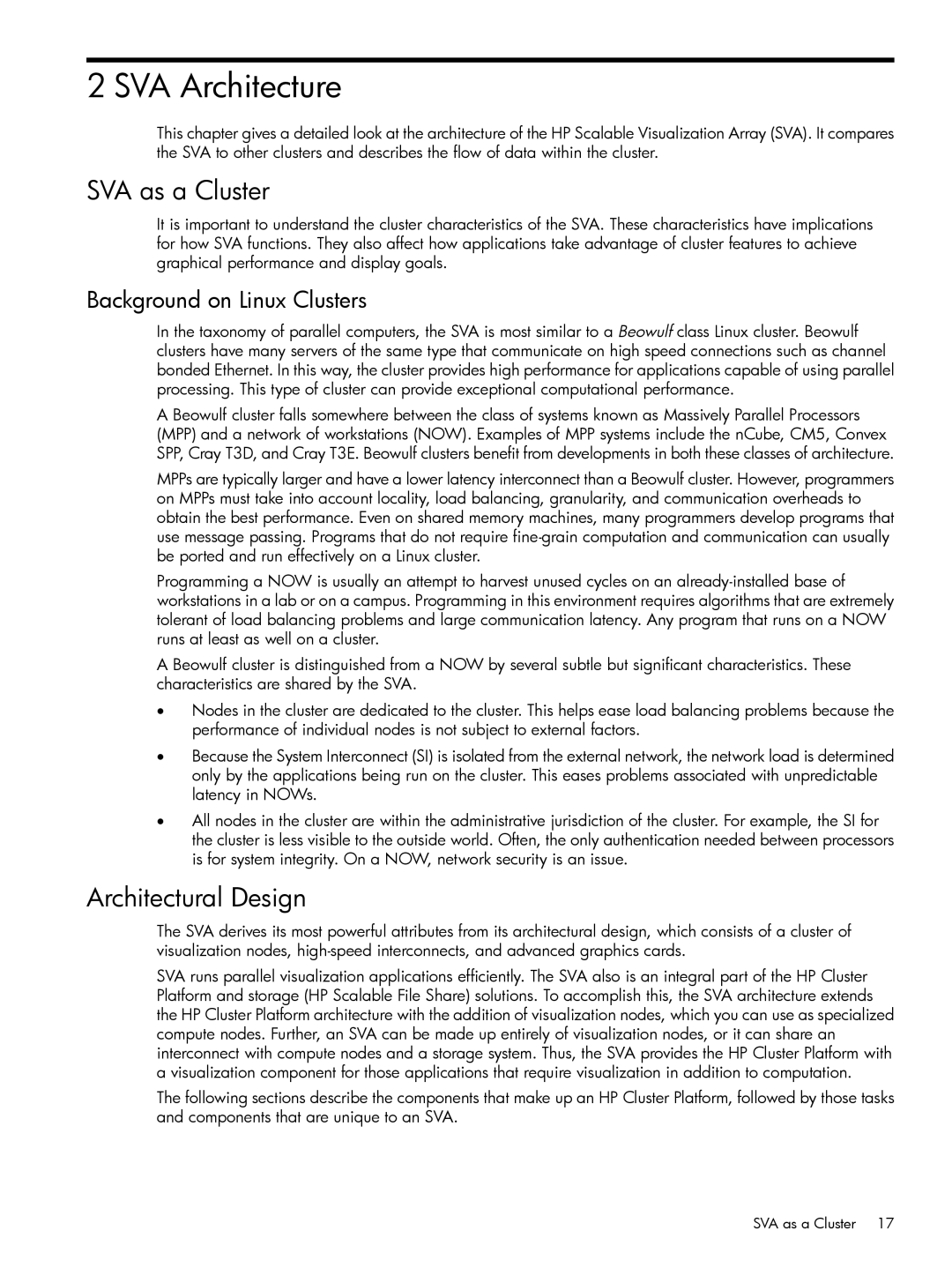2 SVA Architecture
This chapter gives a detailed look at the architecture of the HP Scalable Visualization Array (SVA). It compares the SVA to other clusters and describes the flow of data within the cluster.
SVA as a Cluster
It is important to understand the cluster characteristics of the SVA. These characteristics have implications for how SVA functions. They also affect how applications take advantage of cluster features to achieve graphical performance and display goals.
Background on Linux Clusters
In the taxonomy of parallel computers, the SVA is most similar to a Beowulf class Linux cluster. Beowulf clusters have many servers of the same type that communicate on high speed connections such as channel bonded Ethernet. In this way, the cluster provides high performance for applications capable of using parallel processing. This type of cluster can provide exceptional computational performance.
A Beowulf cluster falls somewhere between the class of systems known as Massively Parallel Processors (MPP) and a network of workstations (NOW). Examples of MPP systems include the nCube, CM5, Convex SPP, Cray T3D, and Cray T3E. Beowulf clusters benefit from developments in both these classes of architecture.
MPPs are typically larger and have a lower latency interconnect than a Beowulf cluster. However, programmers on MPPs must take into account locality, load balancing, granularity, and communication overheads to obtain the best performance. Even on shared memory machines, many programmers develop programs that use message passing. Programs that do not require
Programming a NOW is usually an attempt to harvest unused cycles on an
A Beowulf cluster is distinguished from a NOW by several subtle but significant characteristics. These characteristics are shared by the SVA.
•Nodes in the cluster are dedicated to the cluster. This helps ease load balancing problems because the performance of individual nodes is not subject to external factors.
•Because the System Interconnect (SI) is isolated from the external network, the network load is determined only by the applications being run on the cluster. This eases problems associated with unpredictable latency in NOWs.
•All nodes in the cluster are within the administrative jurisdiction of the cluster. For example, the SI for the cluster is less visible to the outside world. Often, the only authentication needed between processors is for system integrity. On a NOW, network security is an issue.
Architectural Design
The SVA derives its most powerful attributes from its architectural design, which consists of a cluster of visualization nodes,
SVA runs parallel visualization applications efficiently. The SVA also is an integral part of the HP Cluster Platform and storage (HP Scalable File Share) solutions. To accomplish this, the SVA architecture extends the HP Cluster Platform architecture with the addition of visualization nodes, which you can use as specialized compute nodes. Further, an SVA can be made up entirely of visualization nodes, or it can share an interconnect with compute nodes and a storage system. Thus, the SVA provides the HP Cluster Platform with a visualization component for those applications that require visualization in addition to computation.
The following sections describe the components that make up an HP Cluster Platform, followed by those tasks and components that are unique to an SVA.
SVA as a Cluster 17
